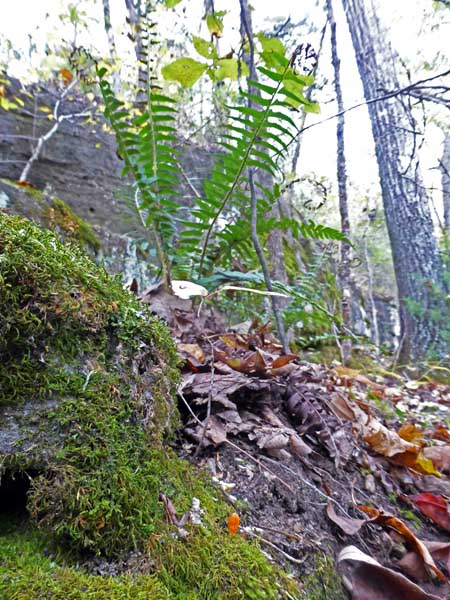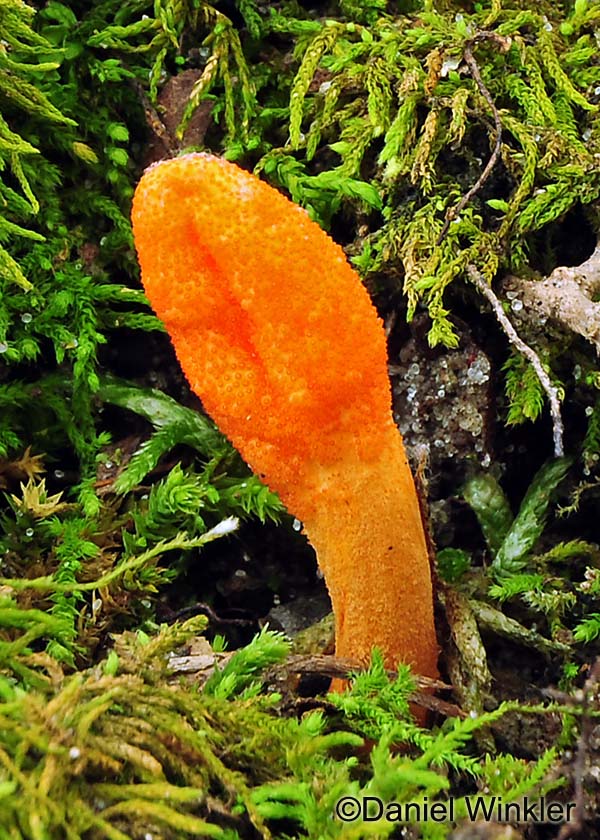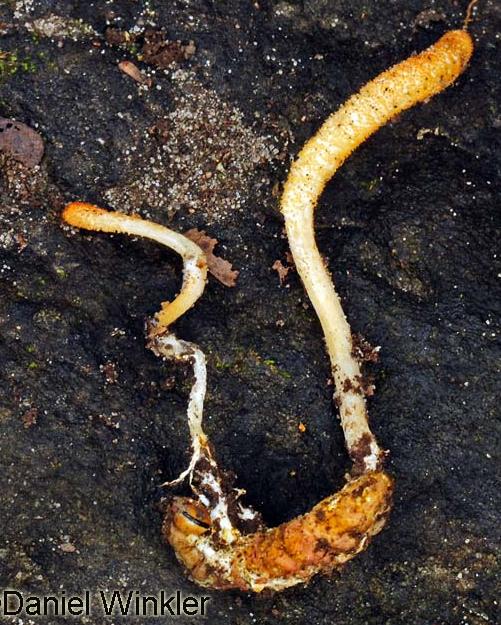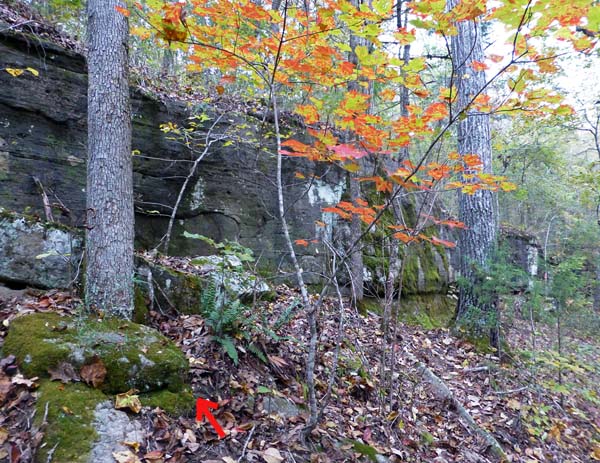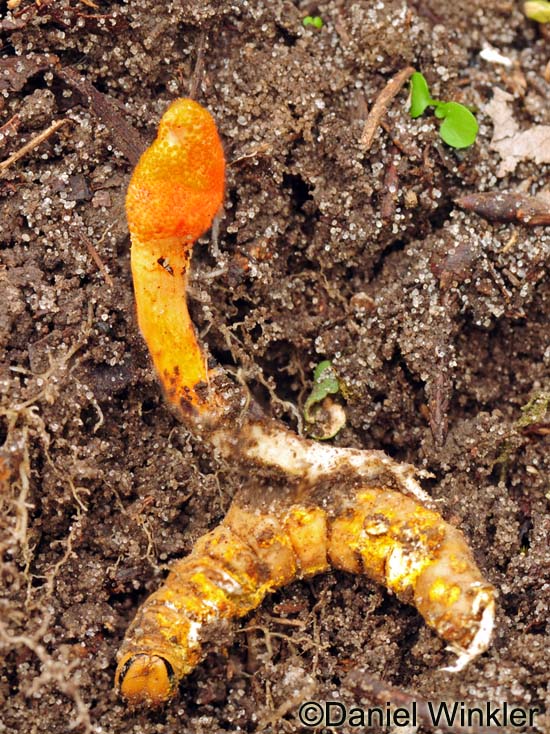At a forest walk during the annual North American Mycological Association (NAMA) foray in Harriet, Arkansas, we came across a dozen Cordyceps militaris. Here photos from the specimens we dug up from the soft soil. Some where growing from below leaf debris, some from below moss. We also left several specimens undisturbed in the ground. What is very interesting is that these Cordyceps militaris is growing on Lepidopteran larvae and not pupae as most commonly encountered. The order Lepidoptera includes butterflies and moths. Morphologically they look very much like regular Cordyceps militaris. It will be interesting to find out if DNA analysis shows any difference between Cordyceps militaris growing on pupae or larvae. In general C. militaris is globally distributed, but there are speculations that it is a species-complex rather than an identical species distributed on all continents but Antarctica.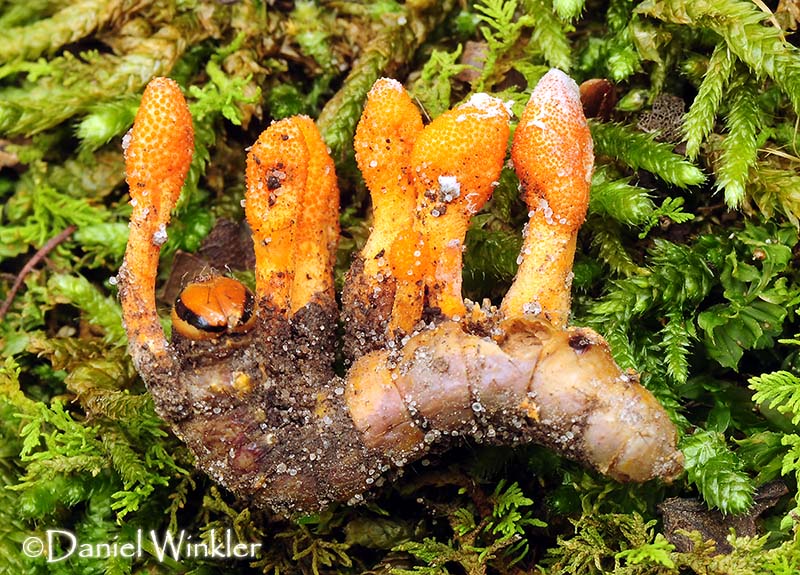
A seven-branched Cordyceps militaris growing out of a Lepidopteran larva photographed right after excavation. It was found by Rachel Giffin and Ken Gribble.
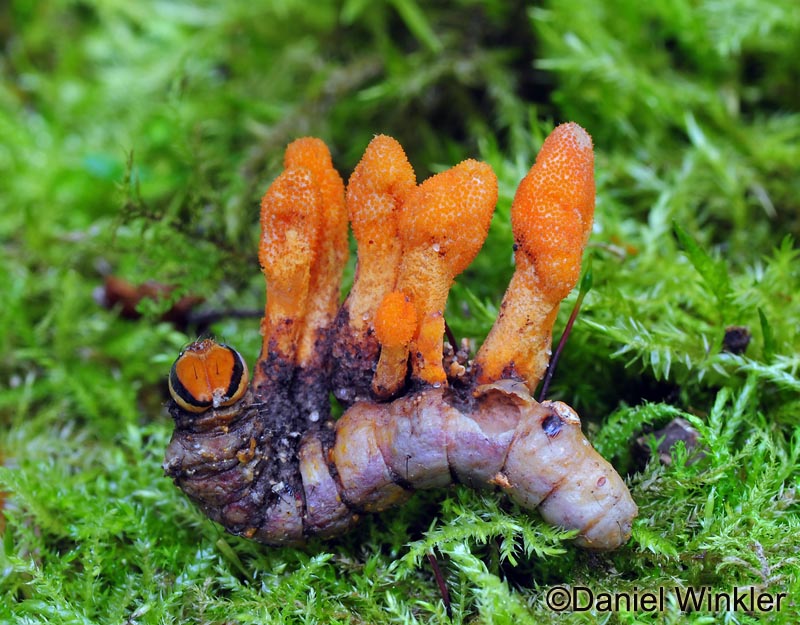
The same Cordyceps militaris specimen well cleaned. Unfortunately, one of the stromata broke off while showing it at the NAMA meeting.
Mature fruiting body covered by round knobs, which are the ostioles (openings) of the perithecia, the "organs" in which the spores are produced in asci.
| The site:
The site of some of the Cordyceps militaris specimens in a typical Arkansas oak-hardwood forest.
Cross section showing the half-embedded perithecia lined up along the outside. In the upper left side of the exposed stroma one can see perithecia that broke away while slicing the stroma.
A single fruiting body of the this insect parasite growing on the larva. It seems that the stroma is attached to the rear end of the larva. |
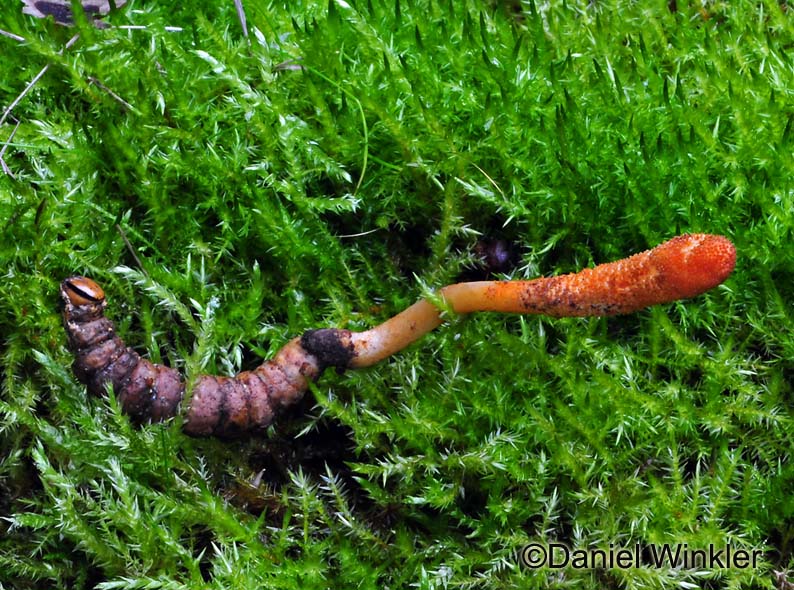
Interestingly the stromata of these specimens are growing out of the exoskeleton in several places, but "neck" and rear end seem most common in the few specimens we dug up.
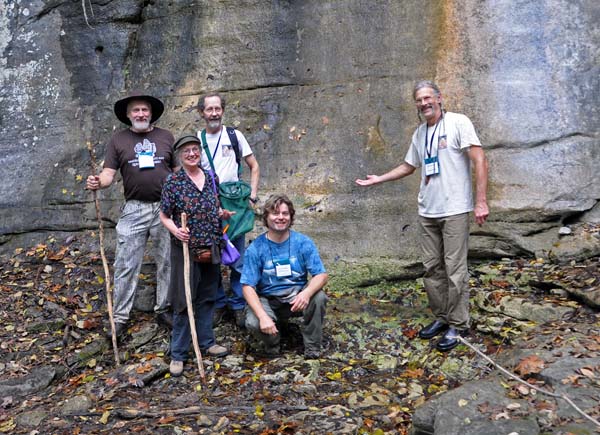
The Cordyceps digging crew: Katie, who found the first specimen and husband Drew Parker and myself Daniel Winkler framed by the Evans brothers Don (on the left) and Larry showing off Jake's Fall pathetic water run. Not pictured Rachel Giffin and Ken Gribble who showed up a moment later.
